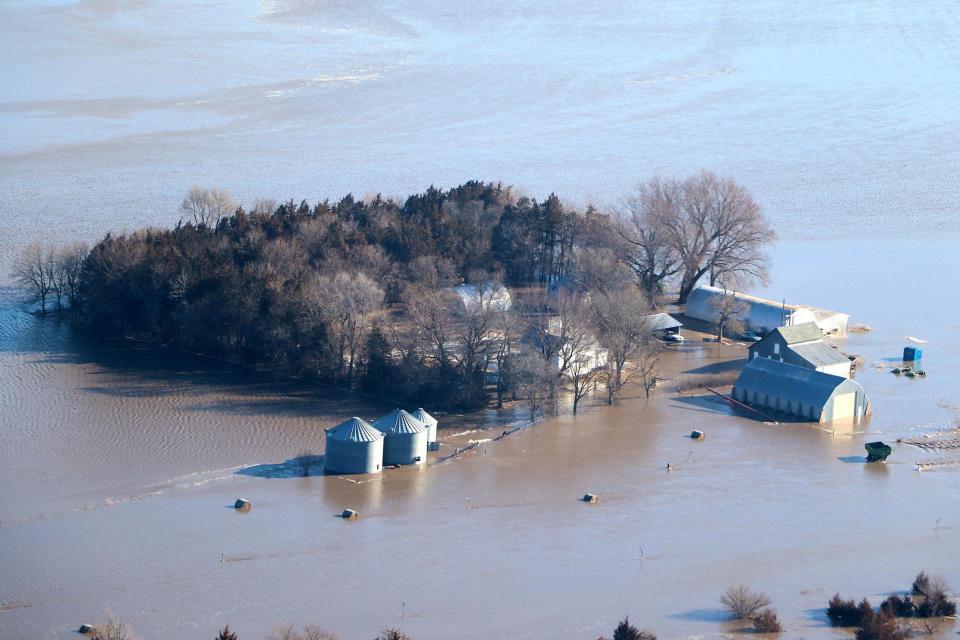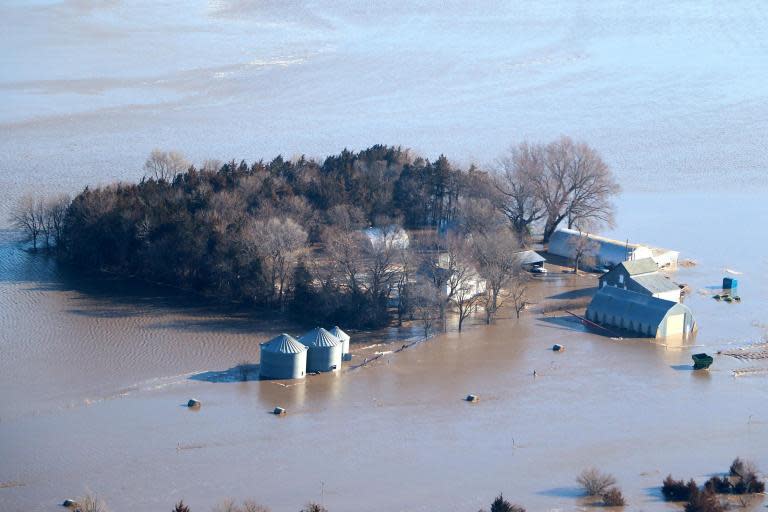US weather: States reel from historic floods as fresh snow threatens parts of the midwest
Record floods that submerged parts of three Midwestern states have started retreating, but more inclement weather continues to threaten Montana and the Dakotas for weeks to come.
Icy tributaries in those regions carry a risk of future flooding. High flood waters have already returned in the western Dakotas, northwest Nebraska and central and eastern Montana, along smaller rivers that feed into the Missouri.
Once the weather warms up, river ice breaks up into giant chunks, which float down the river stream and can cause a jam, which in turn induces flooding, David Roth, a meteorologist with the NWS’s Weather Prediction Center in College Park, Maryland, told Reuters on Monday.
“All that backed-up water is eventually going downstream,” Roth said. “It’ll come down the Missouri in a couple of weeks, and maybe hit Kansas City in mid-April.”
Midwest floods were unleashed last week after a “bomb cyclone” storm dumped torrential rains on hundreds of square miles of the snow-covered Plains.
At least four people died as record flows cascaded down the Missouri, the country’s longest river. The floods also killed livestock, closed down dozens of roads, and caused property losses estimated at more than $3bn in Nebraska and Iowa.
Those flood waters crested near Kansas City on Sunday, the weather service said.
No further precipitation is forecast for the Midwest until midweek, when moderate rainfall is expected, NWS’s Andrew Orrison said on Sunday.
“I think at the worst what it will do is just prolong the gradual receding of the water levels across the various river basins throughout the Midwest,” he said.
The current flooding threatens Kansas City’s drinking water. More than 600,000 customers in the Kansas City metropolitan area were asked to conserve water as flood-levels in the Missouri River created “treatment challenges,” the city’s water utility said on Sunday.
Far up the nation’s longest river, floods loom again.
The Billings Gazette reported late on Sunday that rapid snow melt drove ice jams on the Little Bighorn River, forced the shutdown of a stretches of major highways in eastern Montanta all the way to the Wyoming border.
But the bigger threat is warmer temperatures that will hit the upper 60s in Billings by Tuesday and into midweek, driving more snowmelt that will eventually flow south, said meteorologist Roth.
“All that water is still headed downstream,” he said.
Follow the latest here
Additional reporting by agencies


